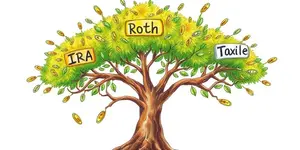
In recent years, investors have begun to recognize that financial returns alone do not capture the full picture of a company’s long-term potential. By evaluating Environmental, Social, and Governance (ESG) factors, you can align your capital with your values while managing risks that traditional metrics may overlook. This approach seeks to blend profitability with purpose, empowering stakeholders to champion sustainability and positive societal change without sacrificing performance.
Adopting ESG criteria is no longer a niche strategy reserved for ethical investors. It has become a mainstream investment philosophy supported by growing data, regulatory momentum, and client demand. Incorporating ESG into portfolio construction invites you to look beyond quarterly earnings and consider how corporate behaviors affect the planet, communities, and governance structures.
Investors integrate ESG factors for a variety of compelling reasons. First, it offers holistic risk management that uncovers hidden liabilities. Environmental liabilities such as climate lawsuits or resource scarcity can erode asset values. Social issues like labor disputes or community opposition may trigger reputational damage. Governance failures, from executive misalignment to corruption scandals, can also threaten shareholder value.
Second, ESG integration can drive competitive returns even in downturns. Studies have shown that funds with strong ESG ratings often exhibit lower volatility and better downside protection when markets tumble. For example, BlackRock’s sustainable funds have historically held up better than their conventional peers during turbulent periods, reflecting the resilience of companies with robust sustainability practices.
Finally, strong ESG credentials resonate with a wide range of stakeholders—clients, employees, regulators, and communities. Building portfolios that reflect environmental stewardship and social responsibility enhances trust and loyalty, reinforcing a firm’s reputation and paving the way for long-term success.
You can employ multiple strategies to weave ESG considerations into investment decisions. Each method balances ethical objectives with financial goals in different ways, allowing for flexibility and customization.
These approaches are often blended. Active managers might combine screening with engagement, while index-based investors could overlay thematic elements to align with specific values. The choice depends on your objectives, risk tolerance, and the level of customization you require.
Building an ESG-aware portfolio requires reliable data and transparent methodologies. Multiple providers—MSCI, Sustainalytics, and Morningstar among them—collect and analyze information from regulatory filings, sustainability reports, and media outlets.
Despite advances, the ESG landscape faces challenges. Ratings can vary widely due to differing methodologies, scope, and materiality assessments. Companies often self-report data, leading to potential inconsistencies or omissions. Investors must navigate these complexities by cross-referencing multiple sources and engaging directly with issuers when possible.
Once you have gathered ESG scores and narrative analyses, integrate them into your quantitative models. Weight each factor according to its material relevance to the industry and the company’s risk profile. Incorporate scenario analysis to stress-test portfolios under different climate or regulatory trajectories, and use backtesting to compare ESG-integrated approaches against traditional benchmarks.
Adopting an ESG framework may seem daunting, but breaking the process into discrete steps makes it manageable.
By following these steps, you can transform a conventional portfolio into one that emphasizes sustainability without compromising on returns.
Greenwashing remains a persistent concern. Firms may overstate their ESG credentials to attract asset flows, obscuring true performance and undermining investor trust. Regulatory bodies—particularly in the European Union—are strengthening disclosure requirements to combat this issue.
Technological advancements, especially in AI and big data, promise to refine ESG analysis. Automated data collection, natural language processing, and alternative data sources (such as satellite imagery) can enhance accuracy and timeliness, reducing reliance on self-reported information.
The universe of ESG assets continues to expand beyond equities. Fixed income, private equity, and real assets are integrating sustainability filters, opening new opportunities for diversified portfolios. As regulatory frameworks mature and standardize, investors can expect greater consistency in reporting and more robust benchmarks.
Ultimately, integrating ESG factors into portfolio selection is not a passing trend—it is a fundamental evolution of investment practice. By embracing this holistic approach, you can pursue outperformance while contributing to a more sustainable and equitable future. Begin your ESG journey today and become part of a movement that aligns capital with a better world.
References













